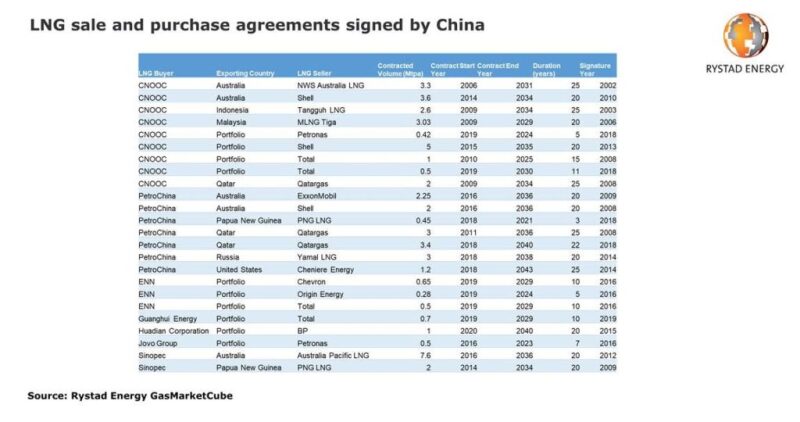The unseasonably warm weather in the northern hemisphere has undercut liquefied natural gas (LNG) demand and, combined with the steady rise of global supply levels, has resulted in record-low prices. Adding insult to injury, the coronavirus epidemic in China has reduced business and industrial activity, with January’s LNG imports dropping by about 10% year on year.
Calculating the impact of the virus, independent energy research and consulting firm Rystad Energy has revised its growth estimate for Chinese LNG demand this year, limiting it to 4.7% compared to 2019.
Previously, the firm expected Chinese demand to rise 10–13% year on year.
Given the strictest lockdowns of cities and factories, the Chinese government is trying by all means to end the outbreak as quickly as possible, so we see a speedy economic recovery later this year and a return to growth in LNG imports. However, the growth rate is expected to be much lower than previously predicted, mainly due to the industrial sector. The largest gas consumer in China is undergoing a heavy hit.
The situation is exacerbated by China’s top LNG importer, CNOOC, declaring force majeure to free itself from some international contractual obligations to receive LNG, and PetroChina delaying the discharge of cargoes, due to uncertain downstream demand and a shortage of workers because of the epidemic.
Rystad Energy expects a reduction or even a complete removal of tariffs on imports of US LNG, given the phase-one deal of $52.4 billion additional purchase (from 2017 level) of US energy goods agreed on 15 January between the parties. Such a development would help China increase LNG imports from the US and add a positive sentiment to the market this year, singlehandedly preventing a demand decline in the country.
As the spread of the coronavirus does not yet appear to be slowing down, concerns are rising among LNG sellers. If more Chinese companies cancel or defer importing LNG volumes from term contracts, and if the spot price then falls further, sellers may face even greater pressure from buyers wanting to renegotiate existing contracts or hesitating to sign new ones.
[Click to expand.]

Under current conditions, and with a downside risk, China has contracts to buy 50 mtpa of LNG from Australia, Qatar, Malaysia, Indonesia, Russia, Papua New Guinea, the US, and portfolio players, and needs to secure another 12 mtpa this year.
Price-wise, we currently expect summer prices to remain at a level of $3.30/MMBtu, as this enables LNG producers to cover the operational costs for more than 80% of exported volumes, helped by associated liquids production.
However, if Asian demand surprises to the downside due to slower economic growth and the continued effects of the coronavirus, we could see prices hit a hard floor at $2.30/MMBtu, assuming a Henry Hub price of $2/MMBtu and sunk transportation costs.
Xi Nan is the vice president for gas and power markets at Rystad Energy. He may be contacted at xi.nan@rystadenergy.com.

